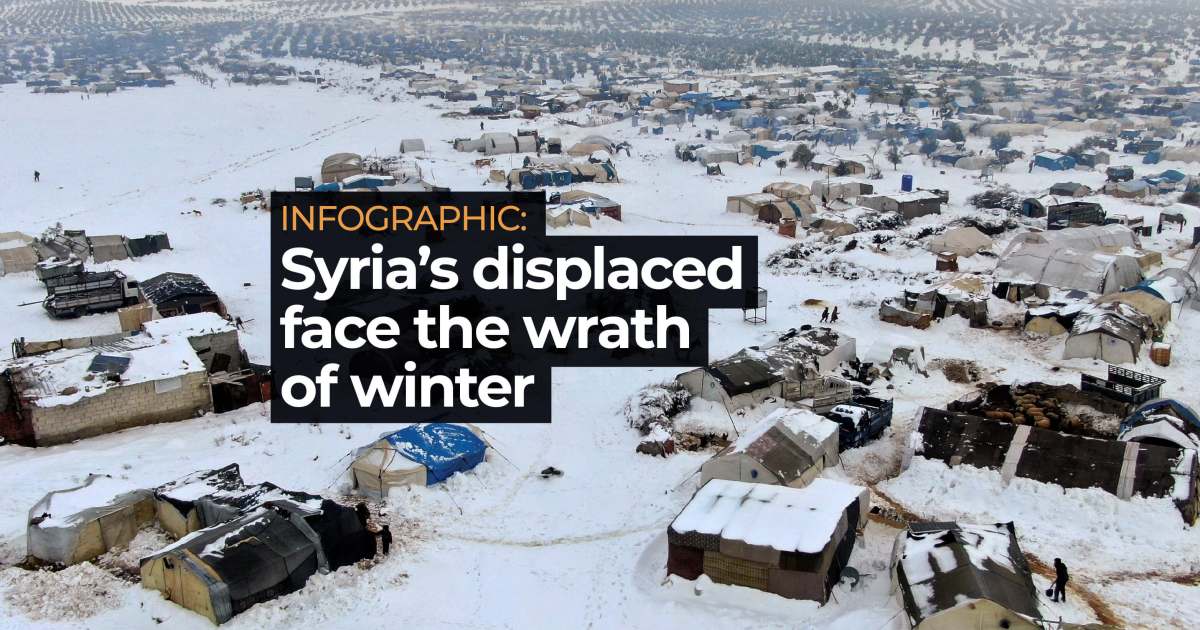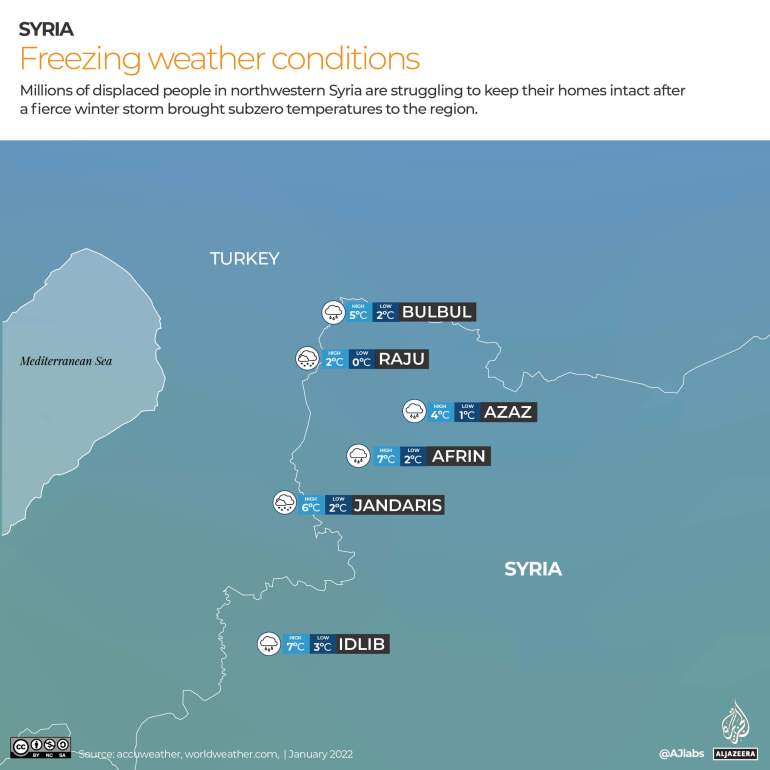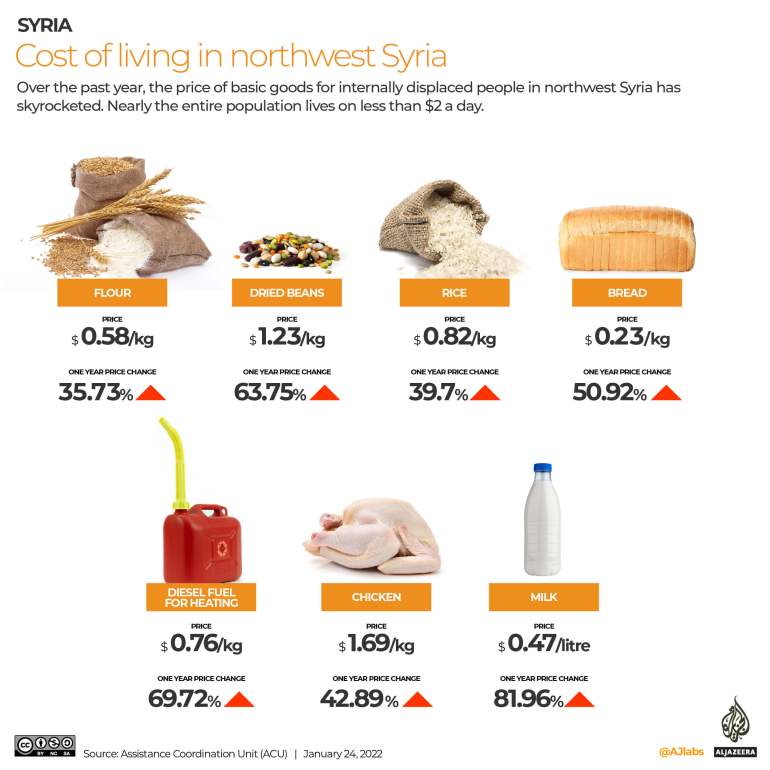Infographic: Syria’s displaced face the wrath of winter | Infographic News

Bitter winter conditions have compounded the poverty of millions of displaced people in northwest Syria.
Over the past week, a snowstorm across Syria and neighboring countries has left millions of displaced Syrians at risk of freezing and has killed at least three children.
In the northwest province, people tried to clear the snow with shovels and even their bare hands. Those who could not afford or find wood for fires have resorted to burning anything they can find, even plastic.
The freezing weather is not only affecting Syrians in the northwest, but across the war-torn country and in refugee camps in neighboring Lebanon, Jordan, and Turkey.
But conditions are worst in northwest Syria, where displaced Syrians make up about two-thirds of the 4.1 million people living there. Almost 2.2 million people live in camps and 1.7 million of those live in tented settlements in a war zone.
“There are 1.7 million people living in these appalling conditions in a war zone, and they have not received the necessary levels of support,” Mark Cutts, United Nations deputy regional humanitarian coordinator for the Syria crisis, told Al Jazeera.
“We are urging the international community to help us get these people out of tents into safer and more dignified temporary shelters.”
Their tents have collapsed or are badly damaged, and at least three children have died from the snowstorm over the past week, according to the UN and aid groups.
One week into the snowstorm, aid workers are struggling to reach hundreds of thousands of families trapped in the storm.
“The freezing temperatures and ice make it difficult for water tankers and health teams to reach those places, and it makes it difficult for people to go to bakeries to collect bread and other essential items,” Cutts told Al Jazeera.

The UN, humanitarian agencies, and local initiatives have provided their routine assistance for the winter weather: insulation materials for tents, blankets, winter clothing, and heating.
But this year, they face new challenges: rampant poverty across the northwest has been compounded by major funding gaps from the international community and the spillover of the Turkish lira inflation crisis as the areas held by Turkish-backed groups have adopted the Turkish currency.
“Last year, for all of Syria, we were appealing for more than $ 4bn, and that appeal was only 45 percent funded. And that compares with the previous year when we had received 58 percent [of funding]”Cutts explains, adding that a sizeable population relies on humanitarian aid to survive.
“We saw displaced people who were melting snow to use as drinking water.”
Over the past month, the price of drinking water, fuel for heating, and wood have skyrocketed.

At the same time, almost the entire population relies on humanitarian aid just to survive, with 97 percent of northwest Syria living in extreme poverty, living below $ 2 a day. More than 80 percent of Syrians living in the northwest need food assistance.
So even after the storm subsides, the effort to support millions will remain urgent. Cutts and aid workers say most living in encampments have sold their personal belongings to survive as they struggle to find sustainable jobs and live in safer and healthier structures.
“They’ve even had difficulty going out to collect firewood and other items to burn for heating and cooking,” Cutts said.
“Conditions in these camps are always difficult, but it’s becoming a lot worse in recent days.”



